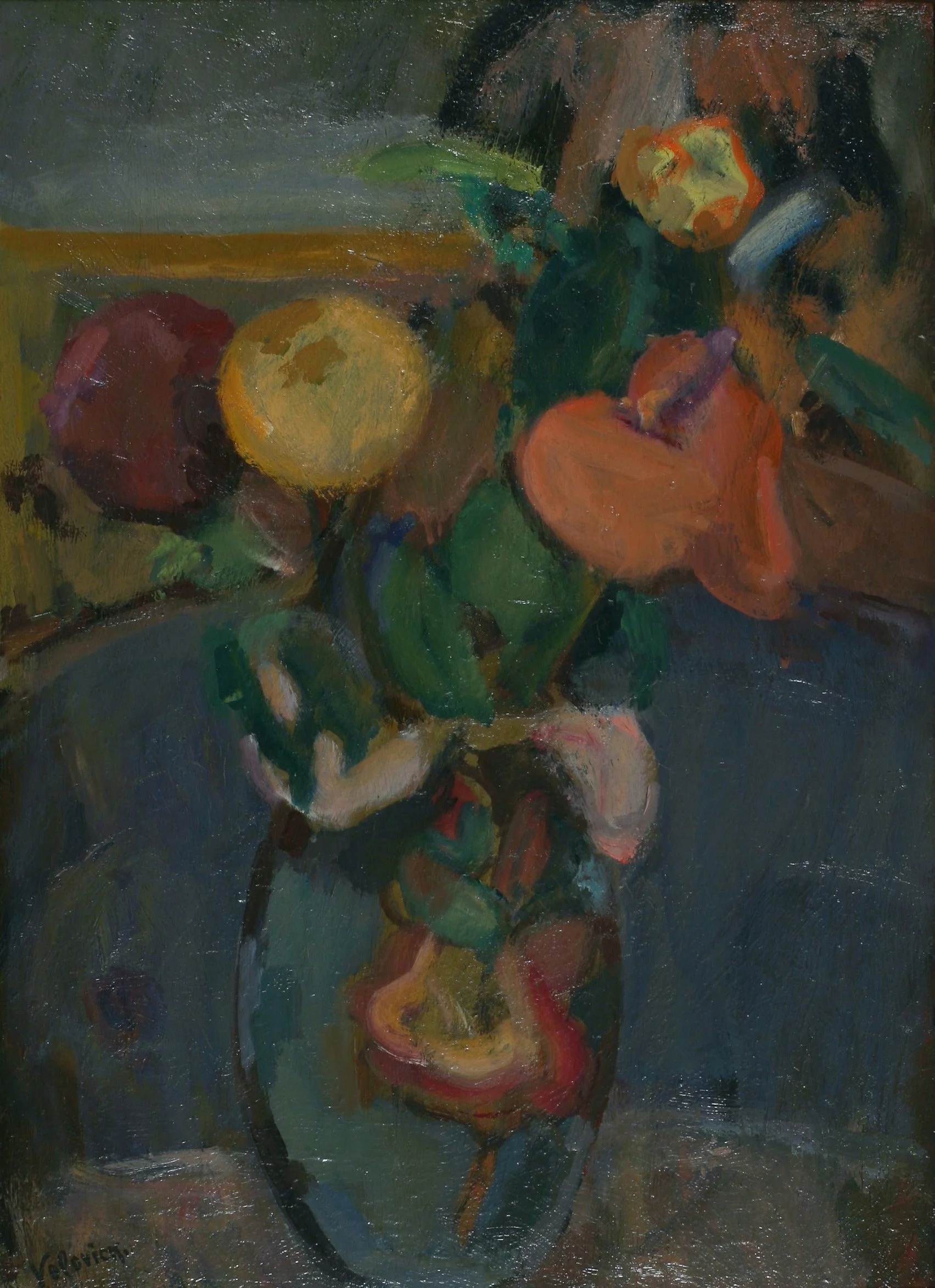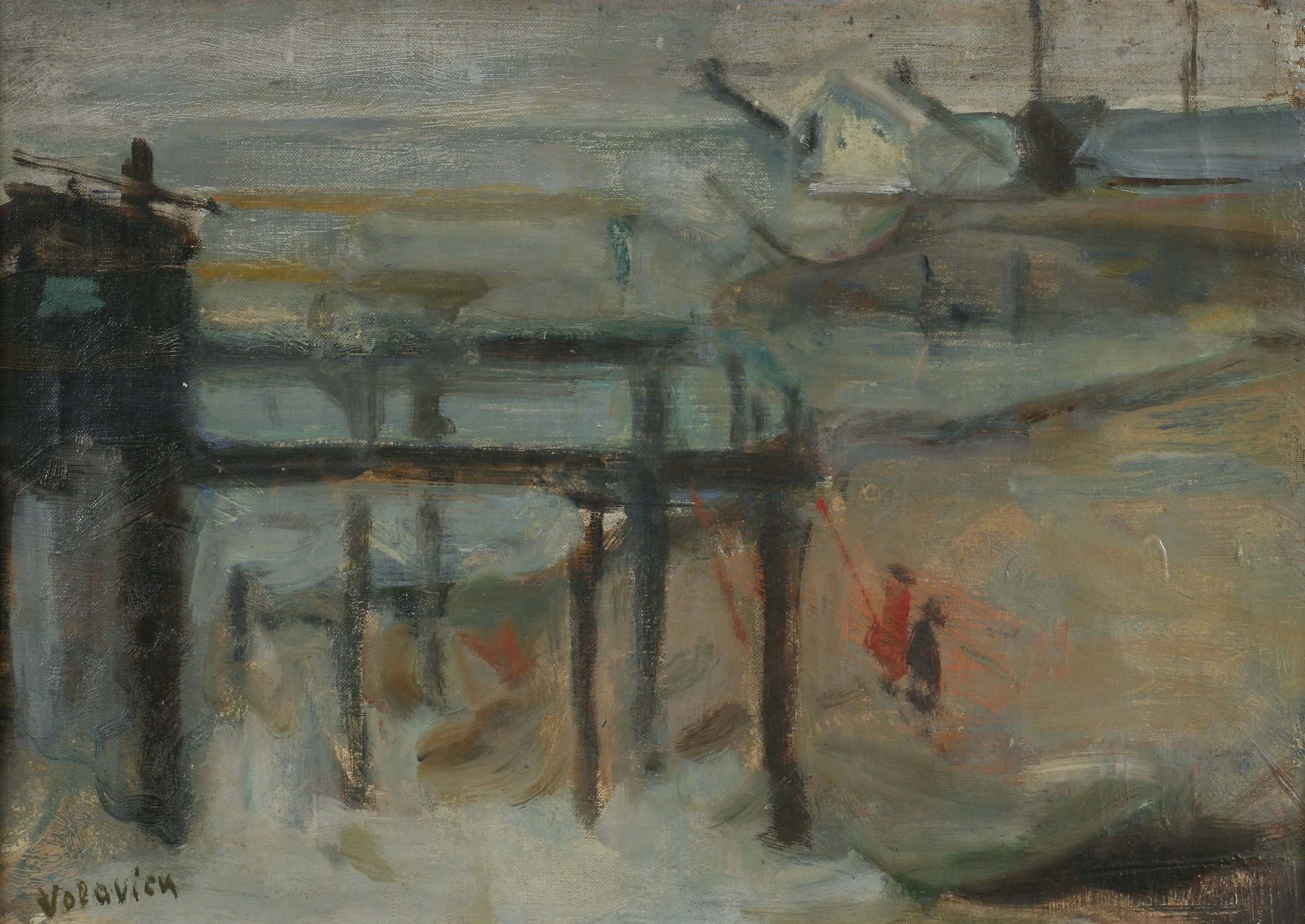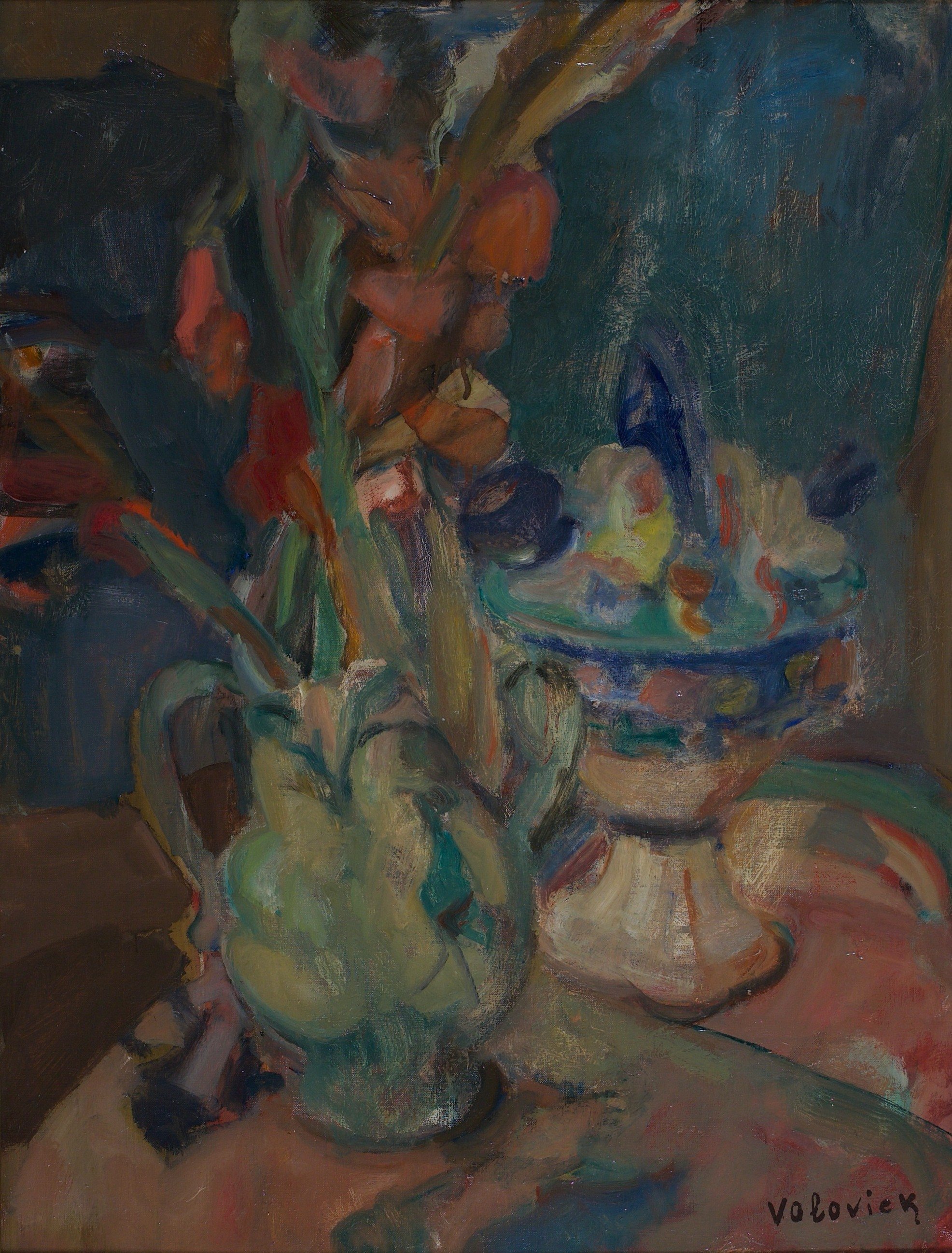Lazare Volovick (Ukrainian, 1902-1977)
Biography
Lazare Volovick was a Ukrainian-born painter, active in France from 1921 onwards. He came from a big family, where he was the youngest of seven. Lazare Volovick's first encounter with painting was made possible by his father, a travelling merchant. In 1917, Lazare enrolled in the School of Fine Arts in Kharkiv and the one in Kyiv the following year. In 1920 Lazare and his friend Kostia Terechkovich decided to move to Paris. Upon his arrival in 1921, Lazare Volovick did not have any money or connections, the only place he knew to go was 'the cafés in Montparnasse'. Volovick quickly found his ground in Paris and met a circle of painters and sculptors, as he spent his time at the cafés and posed as a model at the Académie de la Grande Chaumière.
In 1923, Volovick moved into La Ruche. In the neighbouring studios, he made the acquaintance of Pinchus Kremegne, Michel Kikoine, and Jacque Chapiro. At Galerie 'La Licorne' in 1924, paintings by Lazare Volovick were exhibited for the first time alongside canvases by Chaim Soutine and Pinchus Kremegne. Two years later an exhibition of Volovick, Kremegne, and Nora Wilter-Auric was organised at Galerie des Quatre Chemins. In 1927 he exhibited at the Galerie Brant-Robert with his close friend Vladimir Naïditch. During the 1920s the painters of Montparnasse led a very active social life, participating in group exhibitions and attending balls. The nights at the Bal Bullier are particularly famous for their decorations made by Volovick and other artists of the creative district.
In the 1930s Lazare Volovick travelled through Spain and met his future wife Lya Grjebina. Together they spent six months In New York and stayed in London before returning to Paris. By that time Lazare and his wife had a vast network of friends in Paris, they met daily. Among them were Ilya Ehrenburg, Vladimir Naïditch, Robert Pikelny, and Jean Pougny.
When the war broke out in 1939, Volovick was in Le Touquet. He returned to Paris where he remained in hiding throughout the war and occupation. The war halted the creative work of the painter, but not entirely as he continued to produce pastels, mainly interiors and portraits. In 1943 Volovick participated in an exhibition titled Intimité which also included works by Braque, Carzou, Clavé, Derain, and Vuillard. Once the war ended, Lazare Volovick returned to Montparnasse at first working in a studio of his own, then in the studio of Vladimir Naïditch. During the Nazi occupation, Volovick's studio in La Ruche had been occupied and the paintings in it were either destroyed or plundered.
In 1952 Lazare Volovick was the subject of a solo show at Galerie André Maurice (Paris), the exhibition featured important works from the pre-war period and some of the first paintings from the years after the war. In 1960, Volovick was included in a group show titled La Ruche showcasing the works of Chagall, Kremegne, Léger, Modigliani, Soutine, Indenbaum, and Zadkine, at Galerie Montmorency. Volovick participated in exhibitions of Russian artists of the École de Paris, at the Maison de la Pensée Française in 1961 and Galerie Agora (Paris) in 1962. Those exhibitions displayed Volovick alongside Lanskoy, Pougny, Larionov, Goncharova, Blond, Terechkovitch, and Kremegne. In 1963 a personal exhibition of Lazare Volovick was organised in Serret-Fauveau Gallery in Paris, and the success of the show led to the organisation of two more exhibitions in 1965 and 1967. The last exhibition dedicated to Lazare Volovick during his lifetime was also at Serret-Fauveau Gallery in April-May 1972.
Following the artist's death in 1977 his paintings were showcased in many exhibitions the two most important shows were held at Musée Jacquemart-André and the Grand Palais. In 1985 Volovick was included in a group exhibition Paris School of Montparnasse: Pougny and his circle at De La Rose-Croix. Lya Grjebina, Volovick's widow, gifted a series of his works to the collections of the Pushkin Museum of Fine Art (Moscow) and the State Russian Museum (St Petersburg).
Related artists
Adolphe Feder / Max Band / Pinchus Kremegne / Alfred Aberdam / Henri Epstein / Joseph Pressmane / Emmanuel Mané-Katz / Vladimir Naiditch
Available works
Please see below the selection of available original artworks by Lazare Volovick.






